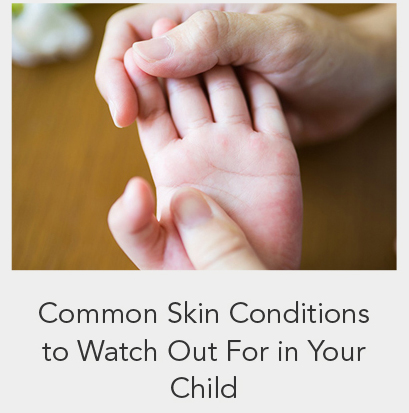
Troubled by contact dermatitis, eczema, allergic rashes and hand foot mouth disease? Let our doctors answer your burning questions. (Also, is there such a thing as being ‘too clean’?)
What is contact dermatitis?
“It is a common condition caused by chemicals on the skin, inducing an allergic reaction or an irritant reaction. Some of the common causes include fragrance, metal, even topical creams that you put on. So, be very careful what you put on. Something which is natural and organic, doesn’t mean it cannot contain these allergens that cause contact dermatitis,” warned Dr Mark Tang, consultant dermatologist from The Skin Specialists and Laser Clinic at Mount Alvernia Hospital.
What is eczema?
Eczema is really common throughout the ages. It can occur between the age of 6 months to 1 year. A lot of times, parents are afraid that it is a food allergy. In general, they’re not. Dr Tang said, “It’s very common to get eczema from heat and sweat. That’s much more common than a food allergy.”
Is eczema a lifelong condition? Will a child be able to grow out of it?
Eczema, thankfully, is not a lifelong condition, assured Dr Tang. “Up to 50% of young children will outgrow eczema. We can’t tell when they will outgrow it, but the majority of them will outgrow it. And even if they don’t, there is always good treatment for eczema.”
What are the most common allergies found in babies?
Some of the common rashes include eczema. There are different types of eczema, one of which is seborrheic eczema or cradle cap, which is very common. As a child grows older, they can get infantile eczema or atopic eczema.
How do we prevent our children from getting Hand Foot Mouth Disease (HFMD)?
HMFD – what every parent is terrified of. To answer that question, Dr Darryl Lim, consultant paediatrician from Kinder Clinic at Mount Alvernia Hospital, explained that one needs to understand how it is transmitted.
HFMD is a highly contagious infection that is transmitted through direct contact with the infected person’s nasal secretions, saliva, fluid from blisters or stools. Your child can also be infected just by touching a surface, such as a door handle, that has an infected child’s nasal secretions or saliva after coughing or sneezing. But it is not just touching a surface. It is touching that surface, then rubbing his nose, eyes or mouth.
So, Dr Lim urged everyone that by cleaning your hands after you touch public surfaces or possibly contaminated surfaces, that’s how you reduce the transmission. “And of course, home hygiene, school hygiene, cleaning surfaces that might be potentially contaminated.”
Is there such a thing as being too clean and hygienic? How do we strike a balance?
Dr Lim observed that during this pandemic, many parents will say: “What? Too clean? There’s never a case of ‘too clean’.”
“But if you think about it, hygiene actually encompasses behaviours that encourage cleanliness and good health. ‘Too clean’ implies a little bit of an obsessive compulsive disorder (OCD), so to speak. So if it kind of rules your life; you’ve made major adjustments to your lifestyle just to stay clean, it sounds a little too OCD. Versus, just making minor adjustments like washing your hands before eating. I think that’s just simply good hygiene.”
So, just practise good hygiene, everyone, to keep your child, your family and your community healthy and safe!
Article contributed by Dr Mark Tang and Dr Darryl Lim, accredited doctors from Mount Alvernia Hospital.
This article is taken from our MyAlvernia Magazine Issue #49. Click here to read the issue on our website.